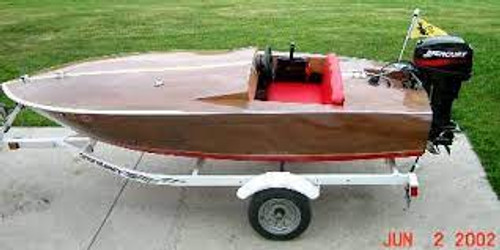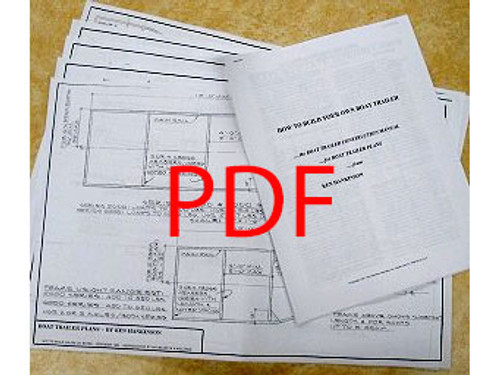Fun on the water with the family will never be the same...
TINY MIGHT may aptly be called a marine "hot rod". Only 12' long, but this little boat packs a lot in a small package. The hull is light and compact for easy trailering and launching, but capable of towing skiers at a good clip.
She turns on a dime and gives you change. When on a plane, the water breaks so far to the rear that you have the sensation of being entirely out of the water. Power comes from a compact mid-located engine for optimum performance. You'll think you are handling a classic road racing machine when you sit behind a peppy powerplant in your own TINY MIGHT. The aft seating location gives a great sensation of speed, and yet is located at the smoothest riding point in the boat. Plus, there's room for a friend... if he's not too timid.
COMPLETE PLANS include FULL SIZE PATTERNS for stem, breasthook, and half-section patterns for the frames and transom. Includes instructions, Bill of Materials, and Fastening Schedule.
- Length overall:
- 12'-0"
- Beam:
- 5'-1"
- Hull depth:
- 24"
- Average passengers:
- 1-2
- Hull weight (approx.):
- 250 lbs.
- Hull type:
- Vee bottom, hard chine hull, developed for sheet plywood planking.
- Power:
- Centrally located inboard motor to 300 lbs.
- Can the hull be extended or shortened?:
- Yes. Up to 10% by re-spacing the frames from the aft end of the stem to the transom a proportional amount. We do not recommend increasing the beam.
- Trailer:
- Designed for use with Glen-L Series 750/1000 boat trailer plans.










